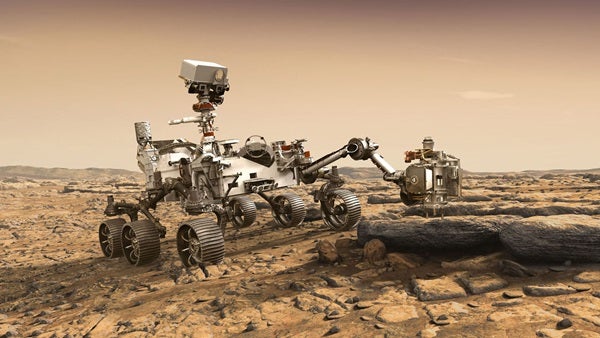The new and improved mission includes upgraded wheels, enhanced camera features, and a built-in drill designed to collect rock cores. An integrated robotic arm will cap off rock core samples that will be brought back to Earth by a future Mars rover. The mission aims to drill a minimum of 20 rock cores, providing scientific data previously unavailable for analysis.
In addition to the mechanical upgrades, the mission features seven new instruments that enable it to venture into territory deemed too dangerous for previous rovers. Mars 2020 will have the capability to survey surface areas believed to have housed bodies of water, such as lakes and rivers, some 3.5 billion years ago. Analysis of the uncharted surfaces will assist scientists in addressing the ever-burning question: Is there evidence of ancient life on Mars?
“Whether life ever existed beyond Earth is one of the grand questions humans seek to answer,” said Ken Farley, JPL’s Mars 2020’s project scientist, in a press release. “What we learn from the samples collected during this mission has the potential to address whether we’re alone in the universe.”
To help answer this question, the mission has high-tech instruments designed to detect small-scale biosignatures that might remain on and below Mars’ surface. Its ultraviolet laser has the power to identify active carbon atoms, while its X-ray spectrometer can pinpoint grain-of-salt size objects. The rover also features radar with ground-penetrating capabilities that, depending on the topography, can survey water, ice, and rock terrain up to 30 feet (10 meters) deep, giving us a look below Mars’ surface for the first time.
NASA has also designed two new landing technologies for Mars 2020, called terrain-relative navigation and the range tripper, which will ease its descent onto the Red Planet and increase landing precision. The range tripper will collect velocity and location information to establish the optimal time to release the mission’s parachute, increasing landing destination accuracy by upward of 50 percent. The terrain-relative navigation will match the rover’s computer vision with pre-generated maps of Mars’ surface to ensure safe landing conditions, making corrections to the landing destination as necessary.
“Terrain-relative navigation enables us to go to sites that were ruled too risky for Curiosity to explore,” said Al Chen, the Mars 2020 entry, descent and landing lead at JPL. “The range trigger lets us land closer to areas of scientific interest, shaving miles — potentially as much as a year — off a rover’s journey.”
Though the specific landing site for Mars 2020 has yet to be determined, three strong contenders, all possibly fostering previous microbial life, are in the running: the potential hot spring at Columbia Hills, the ancient lakebed referred to as Jezero Crater, and the spot of possible chemical interactions between water and underground rocks at Northeast Syrtis. NASA indicates that the final landing site is the most important decision they are facing with the Mars 2020 mission, and a final decision is not expected for over a year.
Regardless of which landing site is chosen, the upgraded instruments and advanced technologies on Mars 2020 have the potential to provide us with new scientific data, and possibly stimulate our wonder for extraterrestrial life.










